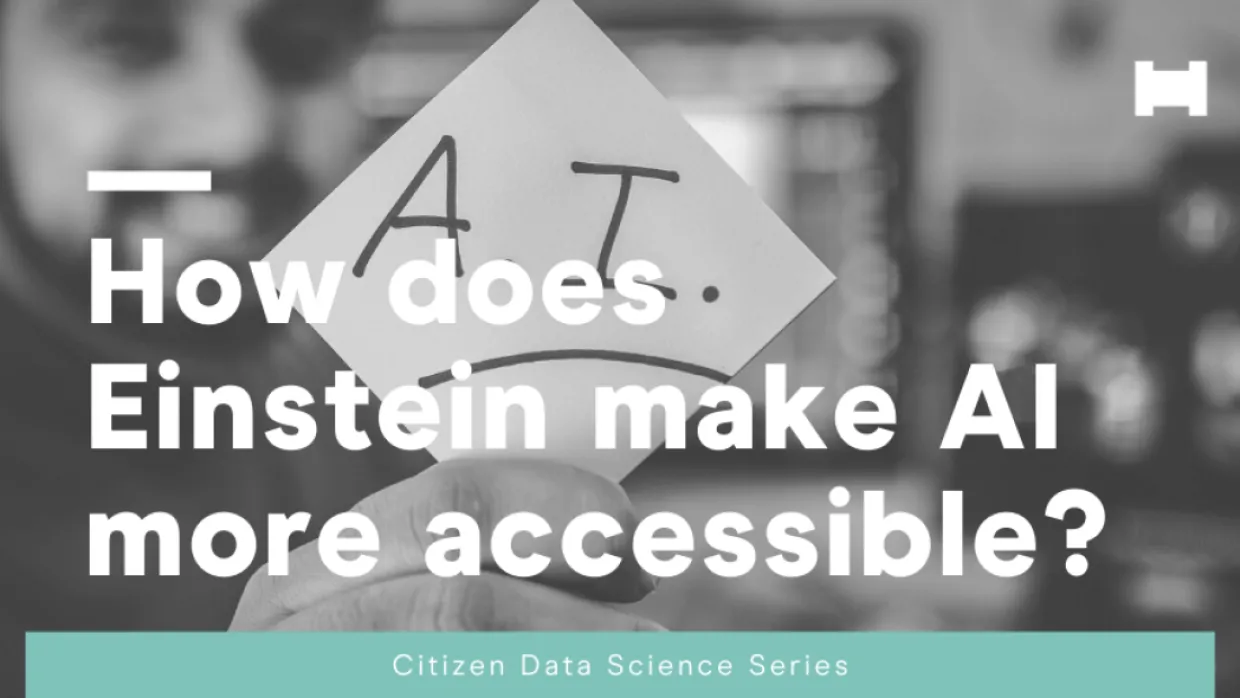Analytics
Citizen Data Science: How does Einstein make AI more accessible?

In the experience economy, finding an efficient way to turn mountains of customer data into actionable patterns and insights gives you a huge advantage. It enables you to personalize with precision—helping you reach the right customer at the right touchpoint at the right time.
Traditionally, highly educated data scientists carried out the daunting task of data analysis. These experts would painstakingly sift through the data—collecting, organizing and processing. Then, they’d develop a model using python or a framework and run the data through them over and over again until insights materialized. This took a great deal of time, effort and specialized skill.
But today, with the help of artificial intelligence, the standard person is able to perform complex data science at a much quicker pace. In fact, 40% of data science tasks are now automated through the use of Salesforce Einstein Discovery and other auto machine learning tools. These breakthroughs have paved the way for citizen data scientists (marketers and other non-technical professionals) who can now build data models and leverage AI without the use of code. No-code data science isn’t just an additional responsibility for marketers to take on—it’s an emerging career path that can transform how businesses operate.
Who are citizen data scientists? What do they do?
“Citizen Data Scientist” isn’t typically a job title—it’s a designated role performed by a data analyst, Einstein product owner, CRM lead, marketing operations manager, etc. Instead of having to determine which algorithm is correct and develop the model by hand, citizen data scientists use AI tools like Einstein to delve into new data, create and deploy models and improve existing models to gain insight.
What are the benefits of Einstein Discovery?
Einstein Discovery uses automated machine learning to reduce the statistical analysis and coding that data scientists would otherwise have to do manually. It automatically pinpoints the best data sets and tells you the best model to use in order to achieve the outcome you want. And you can do all that in 30 seconds rather than the weeks and months it would take manually. Essentially, you get a ton of value with a lot fewer hours and specialties needed.
What does this look like in practice?
Whether you're doing traditional data science or citizen data science, you always need to start with the business objective and outcome. What are you trying to achieve with this model? What are you trying to predict? Once you go through the business criteria and understand the goals, the actual model creation takes minutes.
At Horizontal, we use machine learning internally to support our sister company, Horizontal Talent, a global leader in IT staffing. We pull information from our application management system and use Einstein to predict probabilities of success. For example, if a company comes to us with a need to hire a front-end developer, Einstein can tell our account managers that we’re 62% likely to win the opportunity. The prediction also includes the reasoning behind the percentage and provides insight on how to improve the likelihood. This allows the account manager to make tweaks to increase their chances.
What are some challenges in the citizen data science industry?
There are two main challenges that companies run into with citizen data science. The first is when there are issues with the data itself. This is when the data contains errors, gaps or inconsistencies. Einstein is great at finding outcomes. But if you feed it bad data, it's going to spit out inaccurate predictions. The way to solve bad data is through training and governance.
The second common challenge is when companies feed the wrong data into a model. To solve this, you need to understand the outcome you’re trying to achieve and the things that influence it on a day-to-day basis. You may need to walk through different scenarios with your business reps to understand the significance of data points in the CRM.
What are the biggest opportunities?
Every single one of our clients is talking about AI. But no one knows how to get into it. So now that the barrier to entry has been lowered, it’s easier for companies to take advantage of AI with citizen data science. Now, problems that previously would’ve taken months and hundreds of thousands of dollars to figure out can be solved with much less effort and cost.
Building data science models has always been the hardest part. But now, users of AI tools like Salesforce and Sitecore can create them with the click of a button. Rather than upskilling your teams, you just need to figure out the right type of problem to solve.